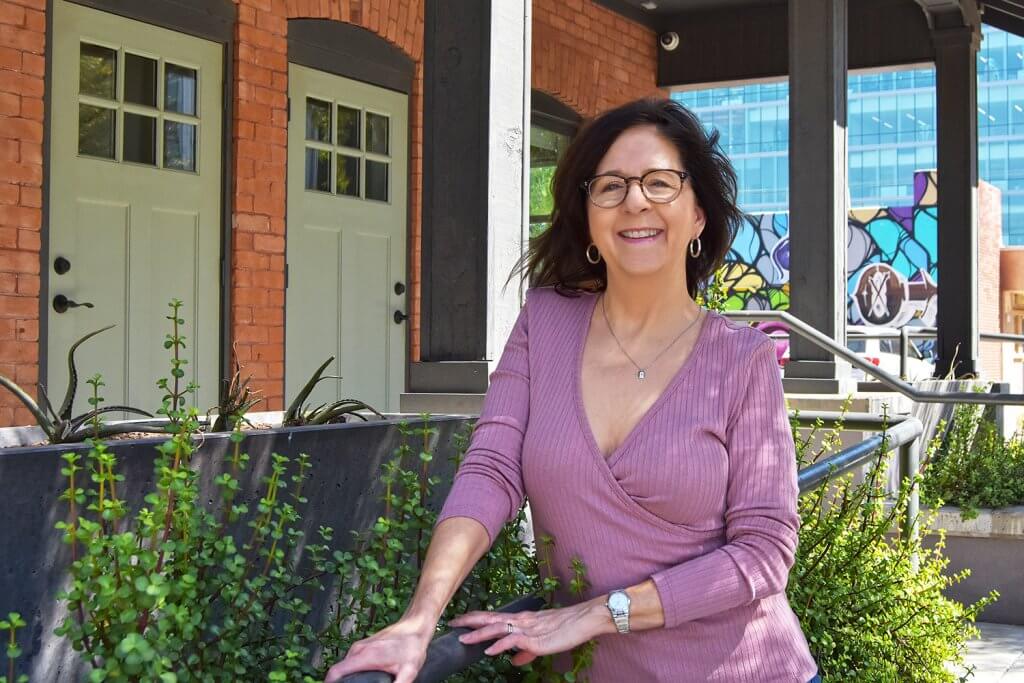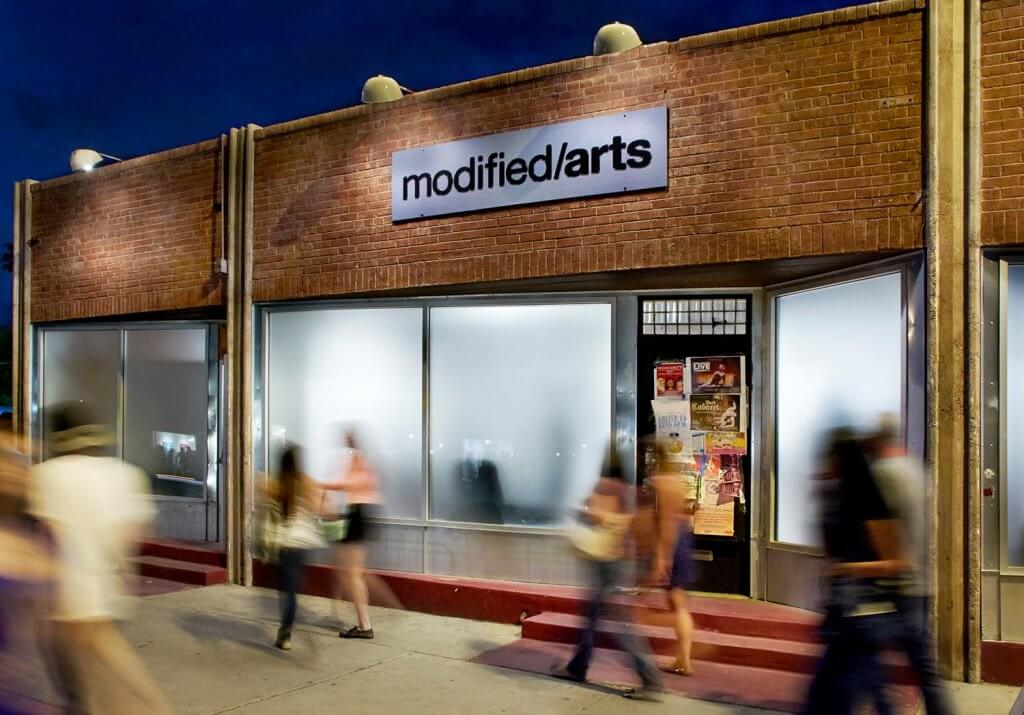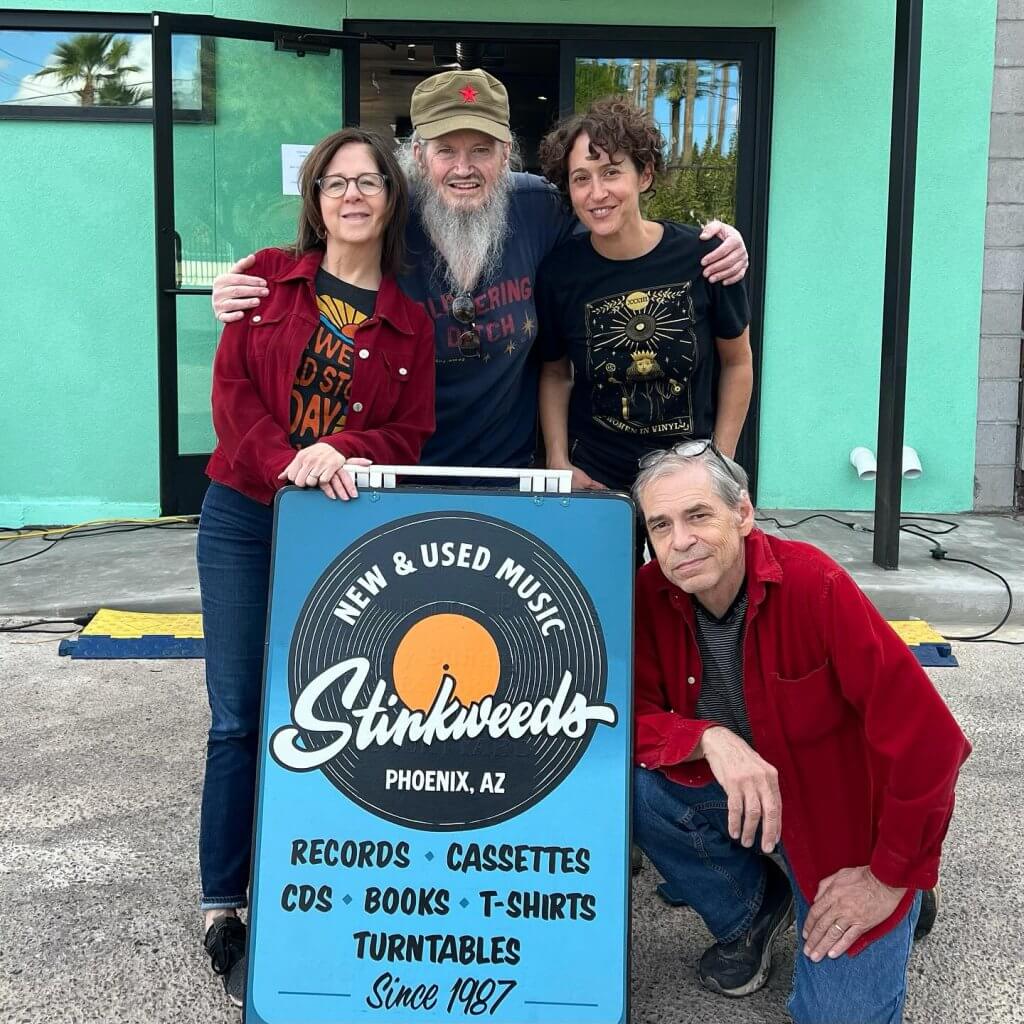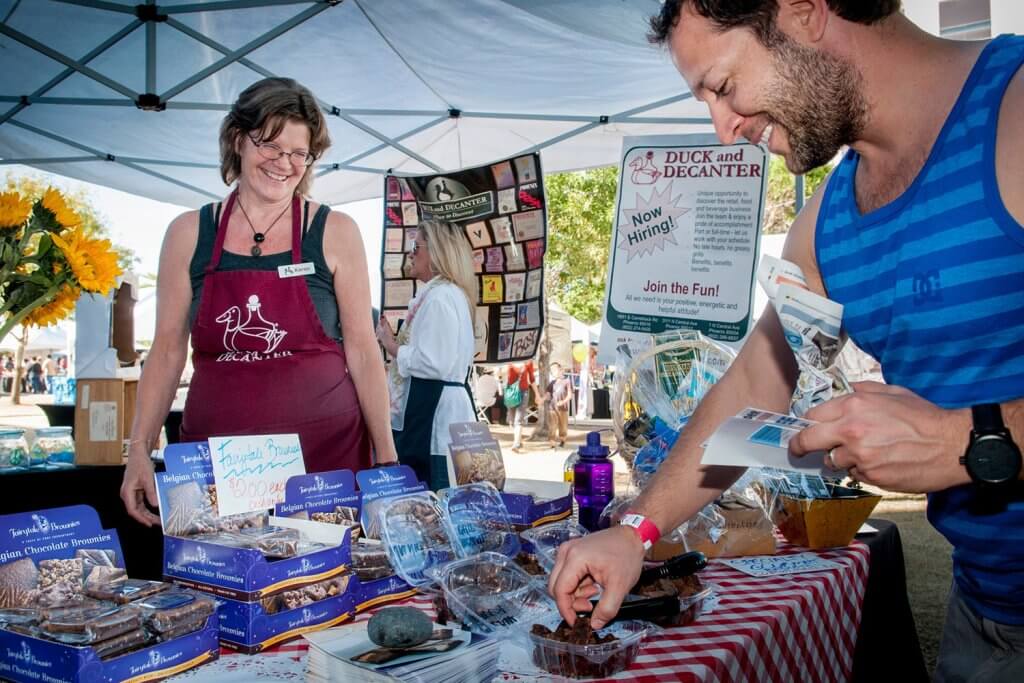Downtown Phoenix wouldn’t be the same without Kimber Lanning.
As the owner of Stinkweeds Records and Modified Arts, she firmly established herself as a fierce amplifier of all things local.
Over time, she transformed from her “record store lady” descriptor into a regionally recognized community development advocate through her nonprofit Local First Arizona, a vital community resource for small businesses and economic development.
In her third decade of community leadership, there’s no corner of business where her vigor and determination to create a level playing field has not been evident, whether as a founding member of the Alliance of Independent Media Stores, recommending local vendors to large companies, like SRP, or organizing small businesses and local leaders against harmful legislation (SB 1070).
Phoenix Community Alliance and its membership were organized from the foundation of industry professionals who all shared the same goal: to use their expertise to benefit the Greater Downtown Phoenix community.

Local First Arizona Founder and CEO Kimber Lanning stands outside her office in the 1911 Wurth House, which she saved from demolition. (Photo: Taylor Costello)
PCA: Before you opened the first Stinkweeds in 1987, you studied architecture for two years. What motivated the career pivot?
Kimber Lanning: When I started my first business, Stinkweeds, I wasn’t thinking about the betterment of Arizona. Opening a record store seemed like a logical thing to do because ASU was not for me. My world was amongst the creatives. I was working at another record store and honestly did not think I would stay in Arizona. We had so many bright young people leaving. ASU was churning out people with degrees in choreography, musical performance, etc., but in order to launch their careers, they had nowhere to go but out. Phoenix needed small and mid-sized theaters to build opportunities for creatives to stay.
When I opened Modified [Arts] in ‘99, we did three to five performances a night, five to seven nights a week for twelve straight years. That gives you an idea of the pent-up demand.
We call Roosevelt Row an “arts district.” I always advocated calling it an “artist’s district.” Once you center the artists themselves, you need to start thinking laterally about what it takes to build mid-career and advanced-career artists. That includes affordable housing, work studios, and attainable performing theater spaces.
PCA: What brought other galleries to the arts district after Modified Arts opened?
Lanning: Personally, I was in a band that played at Metropophobobia (Pronounced Metro-poh-fuh-boh-bee-uh), which was previously a music venue inside the Modified building before I took it over. Having been mainly in the East Valley before, I remember coming outside with the musicians, seeing what little high-rises we had over there, and going, “This is kind of cool.” It felt more urban than anything we had in Tempe. We had a lot of flexibility, and honestly, it was nice to be off the radar of the local authorities. I can’t speak for everyone, but affordability and cool building stock played a big role and led to my work with the city on adaptive reuse.

Kimber Lanning opened the Modified Arts space in the Roosevelt Arts District in 1999. Prior to their usage, Modified was the site of Metropophobobia, a mid-sized concert venue. (Photo: Modified Arts)
PCA: As you spend more time down here, do you have any overarching vision for the area? What motivated you to protect that building stock and advocate for policy changes?
Lanning: I became a big believer in what an entrepreneur could do with a little sweat equity. I spent six or seven years on the city’s development advisory board, making a case for adaptive reuse and helping shape the program and process we have today.
I constantly heard from small businesses caught in the process of getting their certificate of occupancy, which is required for operating any business. All the little shops or restaurants in the 7th Street corridor were held up because they needed a grading and drainage plan, even though there were restaurants on both sides without one.
We had developed a culture of “gotcha” at the inspector level. I had to make the case that we won’t build a 24/7 Downtown unless that’s fixed. The Maricopa Partnership for Arts and Culture (MPAC) gave me a small grant to pay for speakers because I convinced them this was important to the arts.
I brought in Dana Crawford, who developed downtown Denver, and Melvin Greene, who advocated for the City of Phoenix to adopt the International Existing Building Code. I can’t believe I still remember those names. I did this workshop on the ground floor of City Hall in the little rooms they have because I didn’t want anybody to have an excuse not to be there.
Meanwhile, Richard Florida’s book [Rise of the Creative Class] was released. We had a missing middle of creating careers for creators. I knew we would not have a creative class here without older, affordable spaces.

Today, the City of Phoenix’s adaptive reuse program is citywide and allows for buildings up to 25,000 square feet to be repurposed. Notable examples include Changing Hands & First Draft Book Bar, MADE Art Boutique, and Greenwood Brewing. (Photos: Andrew Pielage/Venue Projects, Cindy Dach, and Greenwood Brewing)
I knew that if we wanted more art galleries or more performance spaces, we’d have to shift from talking about the beauty of the historic buildings to talking about economics, job creation, and retaining youth. Luckily, a study that came out several years later through the Preservation Trust called “Older, Smaller, Better” demonstrated all those things.
The pilot adaptive reuse program started in a one-square-mile area and included buildings under 2,000 square feet that were built before 1950. We got six businesses through the process, and we saved them eight months [of effort with the City] and $1,600 each in the process of getting their Certificate of Occupancy. We then went to the city and said, “This works so well. Can we expand it?”
Today, that program is citywide for buildings up to 25,000 square feet built before 2000. It took a lot of hard work, patience and a lot of meetings.
In April 2008, Mayor Phil Gordon and the City Council adopted recommendations using the International Existing Building Code, which lowered the financial and development barriers to entry. They also created an Office of Customer Advocacy to help citizens navigate the bureaucracy to use these newly relaxed regulations.
Since the pilot program launched, thousands of entrepreneurs have found financial viability in reviving a building from the simplified processes Lanning helped implement.
Today, adaptive reuse is shorthand for the creative spirit of businesses inside. A survey of success stories of thriving businesses in the wake of the program includes Changing Hands & First Draft Book Bar, CIBO, Greenwood Brewing, MADE Art Boutique, and countless other local staples.

Lanning with Stinkweeds staff outside their current location at 12 W. Camelback Road, which first opened on September 18, 2004. The store once operated from Mesa and Tempe. (Photo Courtesy of Stinkweeds)
PCA: Were those public speaking and advocacy chops always something you naturally possessed or something honed over time?
Lanning: I remember my life changed [in 2003] when I learned I had it but didn’t know. I was painting the inside of Modified [Arts], and I had my jeans and a T-shirt with paint on them. And I get a call from my friend at the [Phoenix] New Times. And she said, “[Their publisher] Mike Lacey wants to meet with you. Are you at the gallery? We’re just down the street.” And she goes, “Lacey wants you to represent Downtown on a panel discussion, and he’s going to bring in Richard Florida.”
I had no idea what he was planning. I just agreed to it. I later found out it was at the Orpheum, and it would be Grady Gammage Jr., Michael Crow, and Greg Stanton on stage with me. I got dizzy. At this point, I’m a record store lady, and then [I’m speaking at] a sold-out event on a Jumbotron with people lined up outside.
I was on tour with a band in the back of a van and decided to listen to his ‘Rise of the Creative Class’ book on tape. So, I went in totally prepared. I was like a student in the front row, ready to go. Florida was on fire with everything I was saying. And I ended up getting a standing ovation. I was no longer just a record store lady.
PCA: Whether fostering Modified Arts as a third space, using Stinkweeds as a “space to play” for young bands, or empowering small businesses within Local First Arizona, you provided a support system where there wasn’t one before. What motivates that compassion?
Lanning: It has more to do with justice than a weird hero thing where I’m paying it forward. The earliest kids I truly cared about were misfits and ragamuffins whose parents were brutal to them. My businesses became that third space for kids who were bullied all day long because they were different and had nowhere to turn. I wanted to provide that safe space for everyone.

The Duck and Decanter table at the Arizona Fall Fest in Margaret T. Hance Park. Increasing participation from attendees and businesses necessitated the festival to move to Downtown Phoenix in 2012. (Photo Courtesy of Local First Arizona)
PCA: What does it mean to you that within the 1.75 square blocks of Downtown, from Hance Park to south in the Warehouse District, are almost 80% locally owned and operated at a street level?
Lanning: Back then, all the kids used to say this place had no culture and no soul.
When they were building the student union here, I begged them not to fill it with Burger King and Taco Bell [like in Tempe]. It was a myth that students just wanted fast food. Respectfully, if you don’t ask them, they’ll thank you in 20 years.
It makes me hugely proud that we were the first ones to start pointing out how important [local businesses were] to the character and flavor of Downtown. Other downtowns are struggling [with their identity] because it’s all the same stuff you can do anywhere. That sets us apart.
For [Local First Arizona’s] first fall festival [in November 2007], we brought together 27 businesses at the Duck and Decanter at 16th Street and Camelback. And I’ll never forget that people realized we were cool because it was skate shops, bookshops, and record shops.
When you bring it together, we overcome our sprawl because its psychology is uniformity, especially on a street grid where big corporations dominate every corner.
People say things to me like they had the same barber in Chicago for 40 years, moved, and the only thing we have here in Phoenix is Supercuts. And I always say, “Give me 20 minutes, and I’ll find you 20 barbers.”
We have to work a little harder to show people who we are – it’s experiential.
Lanning doesn’t like to take credit for someone else’s sweat equity and successes.
Yet, there’s no shortage of creatives who’ve benefited from her association through a Local First Arizona workshop or exposure inside Modified Arts or Stinkweeds’ walls.
Building a presence as a nonprofit over two decades has allowed Lanning and her team at Local First to widen the scope and depth of services provided. For example, through their Community Kitchens, a food and beverage business starting out will have a fully stocked prep space and a place to learn how to scale up.
There’s more support now than when she started, and to her, it’s the only way.






